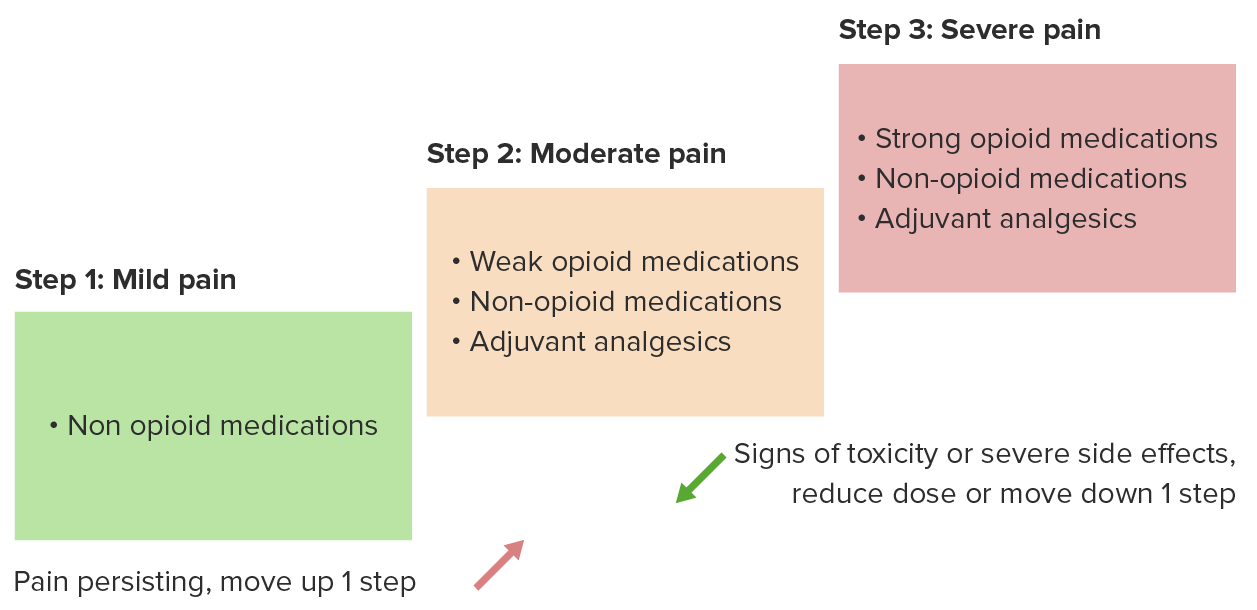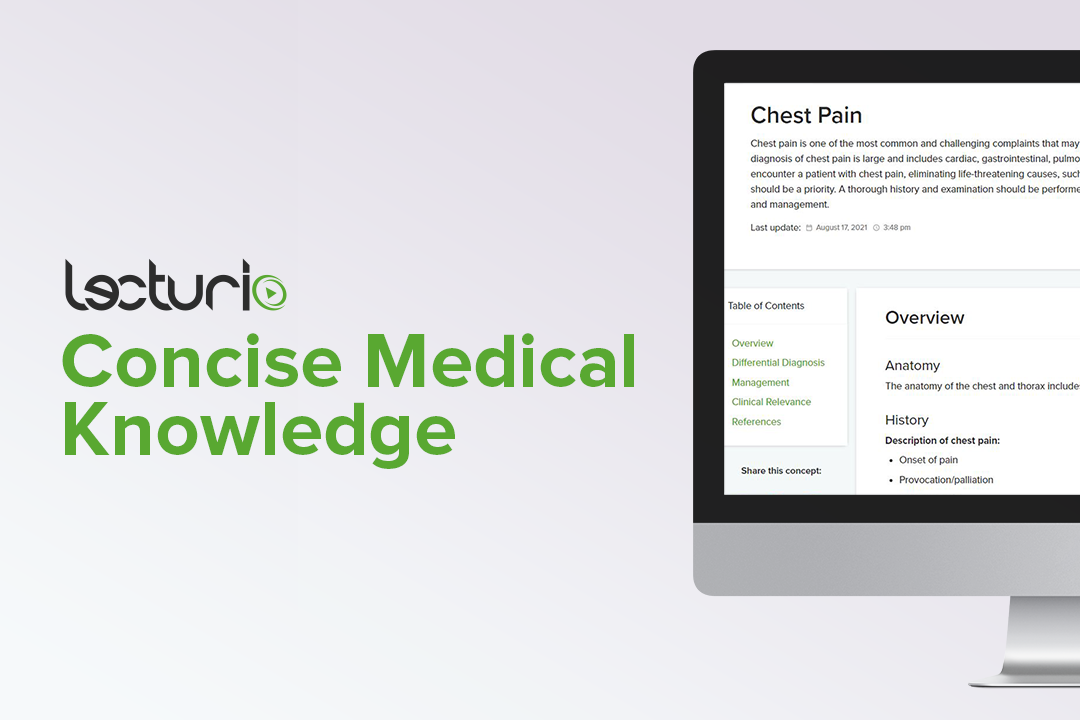Playlist
Show Playlist
Hide Playlist
Case: Left-sided Chest Pain
-
Slides ApproachtoAcuteProblems AcuteCare.pdf
-
Download Lecture Overview
00:01 So, in that same mode, let's take a look again, chest pain. 00:05 I love chest pain. 00:06 I see a lot of chest pain. 00:08 Healthy 40-year-old woman complains of left-sided chest pain for the past eight weeks and it bothers her about twice daily. 00:14 Chest pain is a common complaint in family medicine. 00:20 And this is a younger woman, 40 years old. 00:23 She’s had it for about eight weeks and it’s very frequent, twice daily. 00:27 So, let’s get some more history and think about – think about this as we go through. 00:32 The pain is sharp. 00:33 It lasts seconds. 00:35 It's unrelated to exercise, but began after doing some new moves in her yoga class. 00:40 She feels a little tired, but otherwise her review of systems is negative. 00:44 Think about what you would include in that review of systems. 00:47 And her exam is normal. 00:48 She has a little tenderness to palpation over her left lateral chest. 00:52 And an electrocardiogram was done and shows normal sinus rhythm, no ST changes or T-wave inversion. 00:59 Before we get to the answer, let’s breakdown her history again for a second. 01:03 Left-sided chest pain for eight weeks, it comes and goes. 01:06 Of course, you have to think about cardiovascular causes. 01:09 You have to think about pulmonary causes. 01:11 You have to think about musculoskeletal causes. 01:13 The first thing is, I know she's healthy and she's 40. 01:15 So, therefore, her risk index should be fairly low. 01:18 I don't have a smoking history in here. 01:20 I don't have a family history. 01:22 Those can be added in terms of her cardiovascular risk assessment. 01:27 It bothers her about twice daily. 01:28 That doesn't tell me much, but it is sharp and it last seconds. 01:31 Tells me volumes. 01:34 Angina, generally a dull ache, not sharp, it lasts a few minutes, it doesn't last seconds and fleeting and goes away. 01:41 Also, the pain is unrelated to exercise. 01:44 Again, angina, often related to physical activity. 01:47 And it started after doing some new moves in her yoga class. 01:51 What kind of moves? Because this is starting to sound very musculoskeletal to me. 01:56 She feels a little tired. 01:58 That’s a concern. 01:59 You can think about some of the atypical diagnoses, such as pulmonary embolism, for example. 02:04 But a review of systems is negative. 02:07 Could she have shortness of breath? Numbness and tingling? Nausea or vomiting? Those things, I'm sure, are assessed. 02:16 And her exam is normal. 02:18 The fact that she has some tenderness, especially it’s in the same area of pain. 02:22 We can't reproduce the pain on palpation that’s present in diagnoses such as angina or pulmonary embolism. 02:31 But that said, most patients who have chest pain deserve an electrocardiogram because she can, even with no risk factors, still have some type of atypical presentation for angina. 02:43 And therefore, it's worth doing an EKG, which is a simple test with a low rate of false positives and adverse events. 02:51 So, the question becomes, what do we with this patient next? Do we refer her for her treadmill stress test? Well, that’s not really accurate among women, correct? So, therefore, maybe you want to go to the next step. 03:03 If she has an atypical presentation, do better with stress imaging either with an echocardiogram or with nuclear imaging. 03:10 Or do I think about doing a left breast ultrasound. 03:12 I didn't mention breast pathology could be a factor here too. 03:15 But on the lateral side, in particular, yeah, it could be a cyst or some other type of mass, even an abscess. 03:22 Cancer, very unlikely to be painful. 03:26 Or should it be reassurance and simple analgesics? And I would go in this case for reassurance and simple analgesics. 03:34 And, of course, you can have your own opinions. 03:36 This is just a limited case presentation. 03:38 But based on everything here, it sounds like musculoskeletal is going to be at the top of my list. 03:43 And I’d like to see how she does over time that this resolves. 03:47 Certainly, a lot of warnings about if the pain is changing, if it’s growing more severe, if the analgesics aren’t working, if she develops new symptoms, she's going to be coming back to see you or calling or, if they’re severe, going to the emergency department. 04:01 The chances of any of those happening are very, very low. 04:06 And this brings us to a nice clinical pearl. 04:08 In the majority of chest pain cases in the ambulatory setting and even in the emergency department are not related to acute cardiac ischemia. 04:15 In fact, in primary care, it’s less than 5% of cases of chest pain are related to acute cardiac ischemia. 04:22 So, it is rare to see somebody in active ischemia in your clinic. 04:26 And so, certainly, it’s near – it has to be near differential. 04:31 You’re going to assess those patients appropriately and even transfer the ones with high-risk conditions, but it starts with assessing the patient's history. 04:40 And for this patient, the key was really – it got worse after a move in her yoga class. 04:44 So, there is a mechanism for, for example, a pectoral strain which can produce her symptoms.
About the Lecture
The lecture Case: Left-sided Chest Pain by Charles Vega, MD is from the course Acute Care.
Included Quiz Questions
A previously healthy 42-year-old gardener presents to your clinic for a six-week history of left-sided chest pain that comes and goes. The pain is sharp and usually occurs when he bends over to pick something up in the garden. Episodes last a few seconds. He points to the pain with his two fingers just between the 4th and 5th ribs on the left side. He denies shortness of breath or nausea during pain. He has no personal or family history of a serious illness. He does not take any medications or smoke. Physical examination shows no abnormalities other than tenderness over the location of the pain. An electrocardiogram shows no abnormal findings. Which of the following is the most appropriate next step in the diagnosis or management of this patient?
- A short course of analgesics
- HgA1c
- Exercise stress test
- Emergency referral to the hospital
- Chest X-ray
A previously healthy 28-year-old woman presents to your office because of substernal chest pain that comes and goes. It usually occurs in the evenings after dinner when she lays down to rest. The pain is deep and burning in quality and lasts several hours. In the mornings, she often has a dry cough and a metallic taste in her mouth but does not particularly feel short of breath. She has no symptoms during her regular exercise. The patient is not on any medications or smokes. Physical examination shows no abnormal findings, and an ECG shows no abnormalities. Which of the following is the most appropriate next step in management?
- Antacid medication
- Chest X-ray
- Serum D-dimer
- Refer for lung CT angiography
- Analgesics
A 56-year-old man comes to your office because of one-week history of several episodes of left-sided chest pain. The pain is accompanied by shortness of breath and occurs when he climbs the stairs or walks fast, but it is relieved after about 5 minutes of rest. He has a history of poorly controlled diabetes, hyperlipidemia, and hypertension. He has smoked one pack of cigarettes daily for 30 years. His vital signs are within normal limits. Cardiopulmonary examination shows no abnormal findings. An ECG shows an old left bundle branch block, also present on a previous ECG obtained one year ago. Which of the following is the most appropriate next step in management?
- Emergency referral to the hospital
- Refer for lung CT angiography
- Analgesics
- Counseling on smoking cessation
- Reassurance
Customer reviews
5,0 of 5 stars
| 5 Stars |
|
1 |
| 4 Stars |
|
0 |
| 3 Stars |
|
0 |
| 2 Stars |
|
0 |
| 1 Star |
|
0 |
Gfhghggkg g gic guitiytytb jgyitiytityigiyyg hkgkhgghkgiyg ads at cadre ytgjg r hitting jhhgkghk oyster ESR GH.





